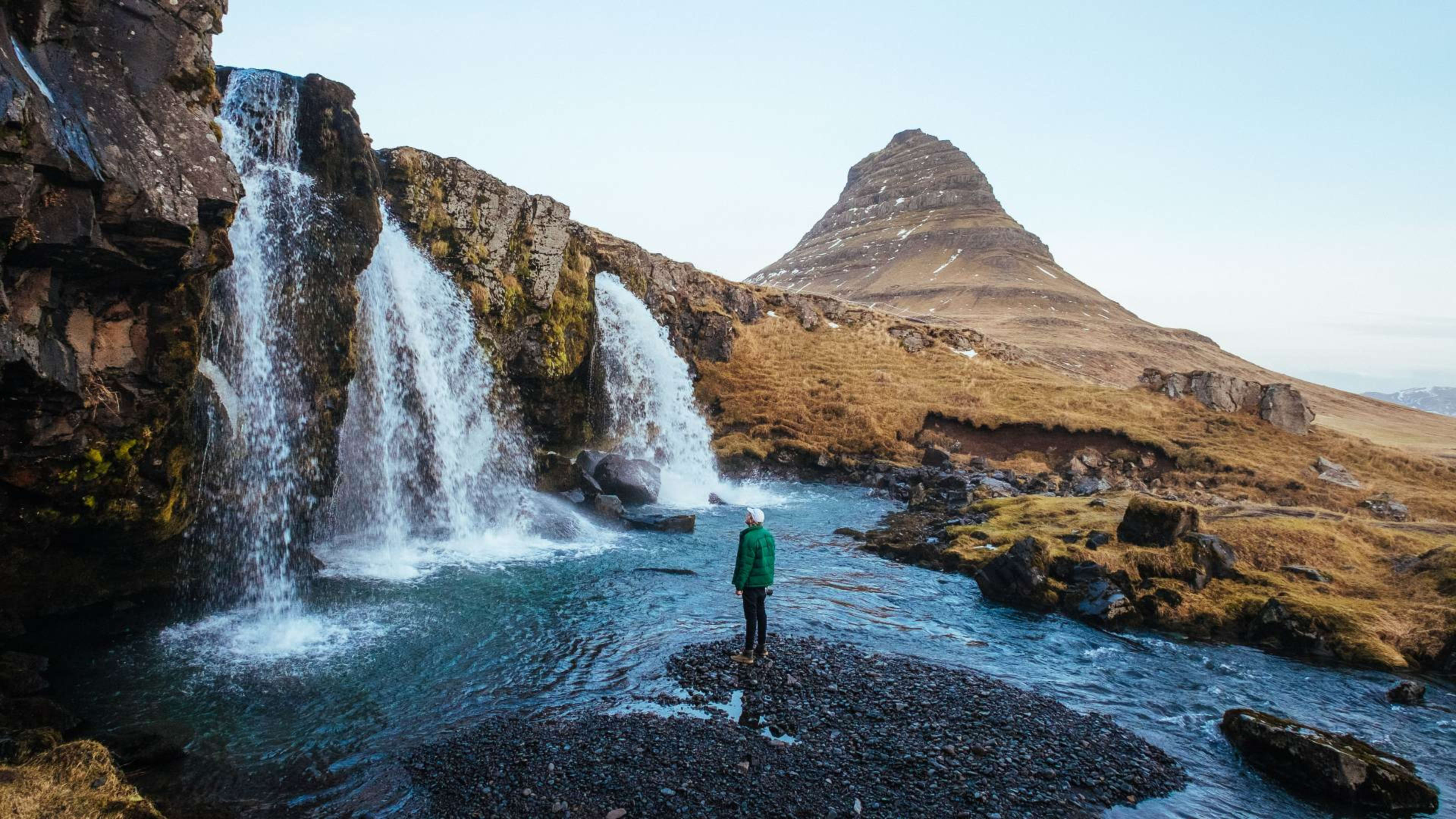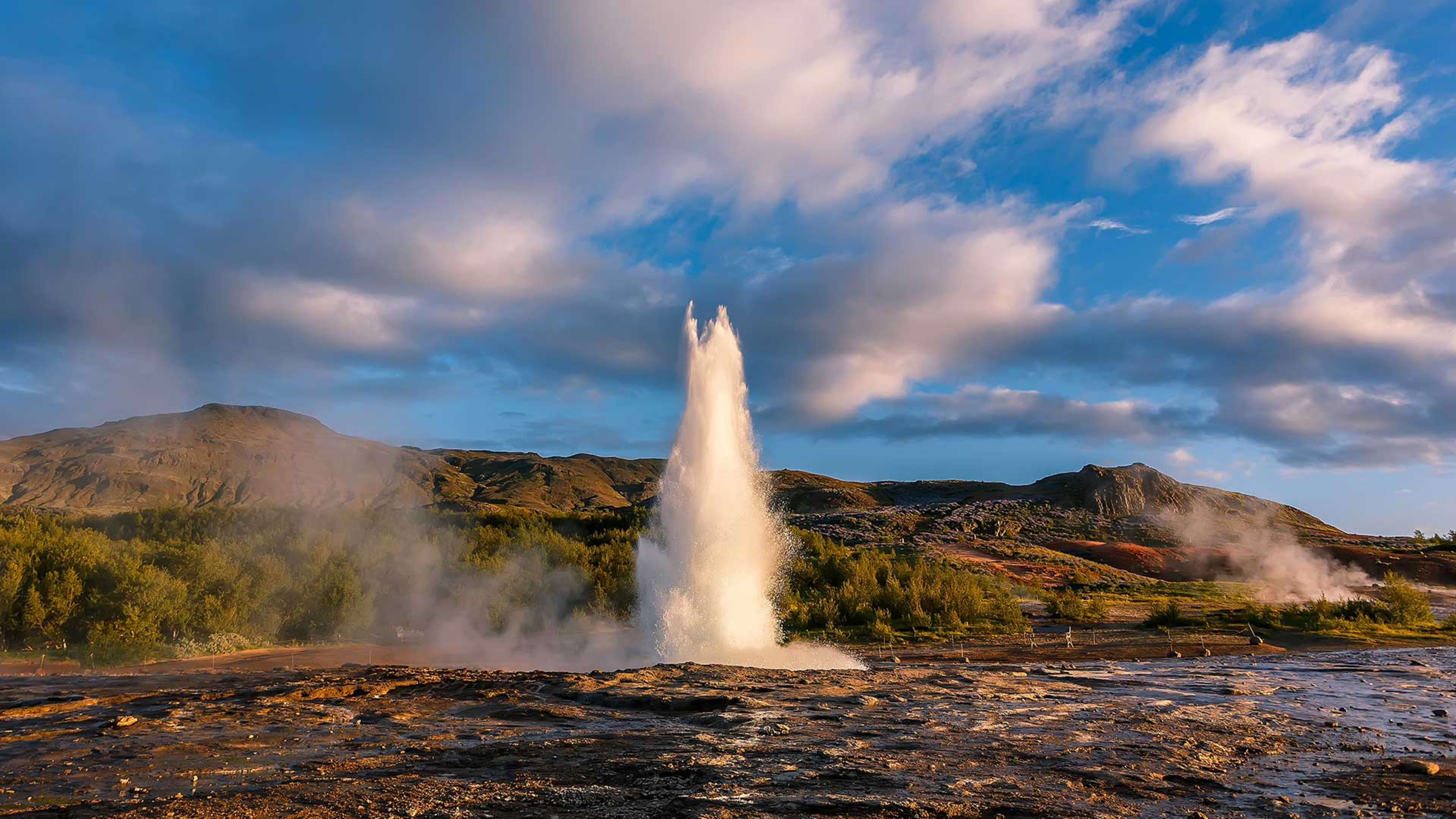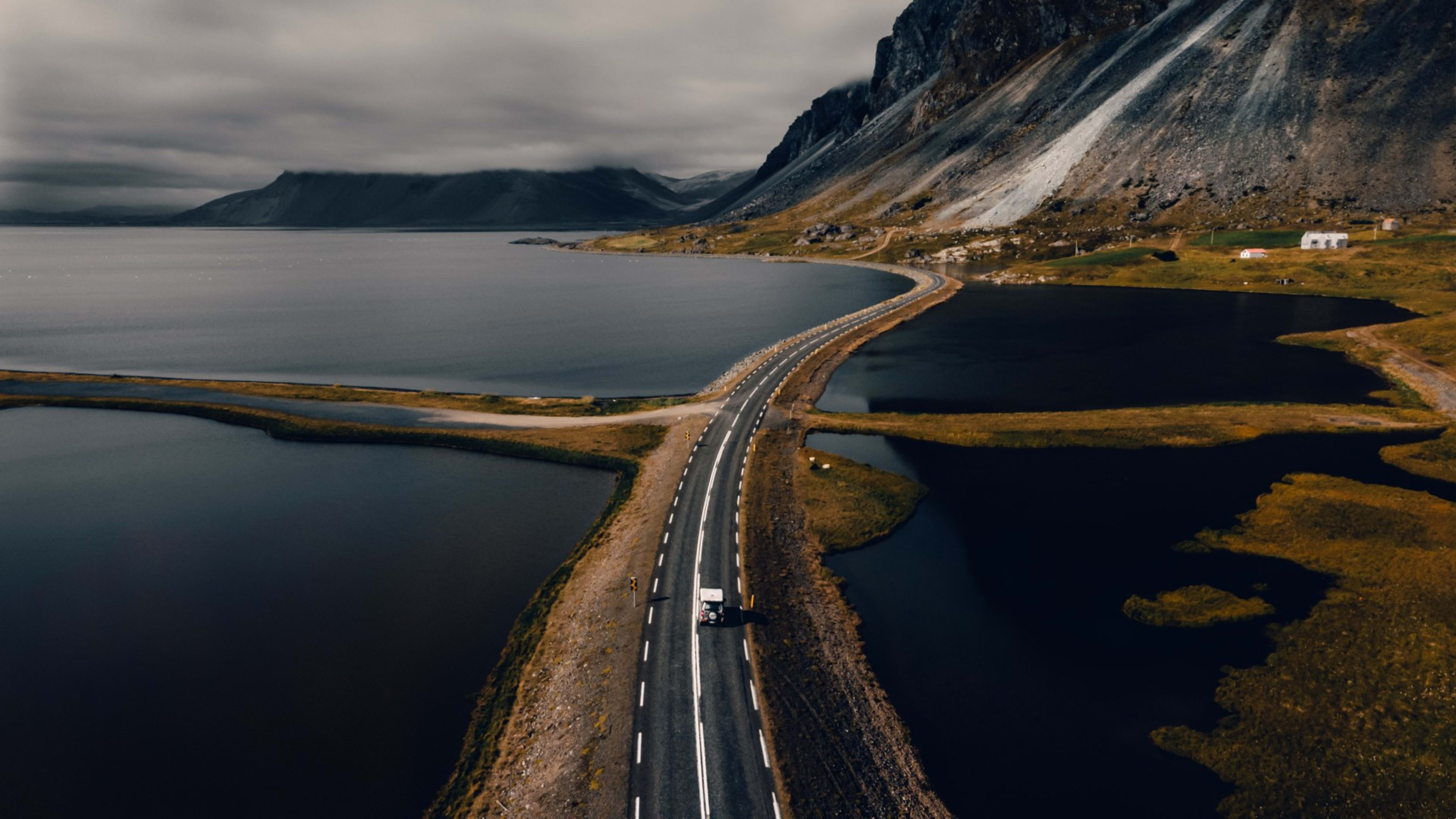Iceland’s grass-roofed houses are a key part of its culture and heritage. The turf homes you see today have kept the Vikings warm and sheltered from the rough climate for over 1100 years. Stepping inside takes you back in time, giving you a firsthand look at the country’s past.
Iceland might not have many ancient and grand buildings to show off like other European countries. But what you’ll discover here are the unique and charming Icelandic turf houses, a true testament to the creativity and resourcefulness of its people.
In this guide, you’ll learn everything you need to know about turf house history and preservation. What’s more, you’ll find out which ones to visit when you’re here.
- See Icelandic turf houses on a self-drive tour of Iceland.
The history of turf houses in Iceland
If you visit Iceland today, it’s hard to believe that the country was once largely covered in trees. In fact, between 25-40% of Iceland was forested in the 9th century during its settlement years.
Birch was especially common back then. So, even though our neighboring Scandinavian countries used oak to build their homes, Icelanders used birch.
But with limited resources and little thought for the future, the trees were quickly used up. Sadly, this would take centuries to heal and cause land erosion all over the island. When you explore Iceland, you’ll notice that only a small part of it (about 2%) is covered in trees.
That said, people still had to build a safe shelter for themselves and their families. So, they dug deep into tradition to find a way to do so.

At this time, turf roofs were already common in Norway, where most of the settlers came from. They knew this building material offered better insulation from the cold than wood or stone.
It also helped that turf was easy to come by in Iceland – which is why almost every farm was made from it.
- Get local insight into Iceland’s history on a guided group tour.
- Learn more about Icelandic nature & landscapes.
How were turf houses built?
Turf houses, or torfbæir as they’re called in Icelandic, were made of flat stones, wood, turf, and soil. A wooden frame was built first, and then layers of turf were laid down in a herringbone style to seal the insulation.
The rest of the wood was used for doors and doorways, which doubled as beautifully carved decorative features in wealthier homes. In richer households, you’d also see floors covered with rocks or wood.

The biggest design focus was on the baðstofa, the communal living room where everyone gathered to share stories, knit, and make wool.
The room featured a special chimney where the smoke from the fire could escape. At night, you’d find families keeping cozy here and warming themselves by the fire before drifting off to sleep.
Do Icelanders still live in turf houses?
No, Icelanders don’t live in turf houses anymore. You might still see the occasional grass roof, but that’s more about preserving heritage rather than using turf as insulation.
In 1890, over 87% of Iceland’s population lived on turf farms in the countryside. Since then, more and more people started moving closer to the city. This is how the colorful corrugated iron and wooden houses you see in Reykjavík today started taking shape.
By the end of the 19th century, the reign of turf houses in Iceland had come to an end.

- Discover the country with like-minded travelers on a bus tour of Iceland.
- Find out more about Iceland’s people & culture.
7 amazing turf houses you can visit today
You can still find preserved turf houses all around Iceland. Many of them have been turned into museums or exhibitions that give you an amazing insight into life in Iceland from the 9th to the 18th century.
Let’s explore some of them below!
1. Árbær Open Air Museum, Reykjavík
For many kids raised in Reykjavík, this is the closest turf farm where they can learn about their heritage. It’s a small cluster of extremely well-kept houses, and the artifacts inside tell you a dazzling story of life in the 19th and 20th centuries.

The staff often dress up in traditional clothing and encourage you to freely wander around and explore the collection of historic buildings. You’ll find each one has its own story to tell.
Árbær is the perfect place for families, history buffs, or anyone curious about Iceland’s past. You can visit year-round and easily reach it via public bus from downtown Reykjavík.
- Stay in Reykjavík & visit nearby attractions on a multi-day tour.
- Related: Best museums in Reykjavík.
2. Keldur, South Iceland
Keldur is the oldest turf house in Iceland, dating back to the 12th and 13th centuries.
This is where Ingjaldur Höskuldsson from the famous Brennu-Njáls Saga once lived, adding to its historic appeal. The saga takes you into a world of feuds, honor, and revenge in medieval Iceland, and it's one of the country's most famous stories.
Later, the Oddi family, who raised the famous historian and poet Snorri Sturluson, also lived here.
The turf houses at Keldur have been rebuilt many times over the years. Archaeologists have uncovered about 18 farmsteads here during this time. Since the farm is near the Hekla volcano, some of them were even built using rocks from its eruptions!
In 1942, Keldur was bought by the National Museum of Iceland and is now part of its Historic Buildings Collection.
One of the more exciting things you’ll explore here is an old underpass believed to have been built as an escape tunnel during the violent Sturlung Age. In fact, it’s the oldest remaining structure in Iceland!
The farm is open for visitors in summer and is a great spot to check out when you’re in South Iceland.
- Stop by Keldur on a summer trip to Iceland.
3. Skógar near Skógafoss, South Iceland
You’ll find the beautifully put-together Skógar farm cluster on the south coast, near Skógafoss, one of Iceland’s best waterfalls. A visit here is the perfect 2-in-1 stop: see the iconic waterfall and visit the charmingly reconstructed turf houses.

What makes Skógar unique is that the turf houses were actually moved from other areas in Iceland and rebuilt here. They were restored in a way that shows off their different architectural styles, giving you a great look at their unique designs.
You can even go inside the houses and see beds, cooking equipment, and tools, to get a feel for what life was like inside these walls.
There’s plenty for you to see at Skógar, which has been a museum since 1949. It’s another stop you won’t want to miss along the south coast.
- Visit top attractions along the coast on a tour of South Iceland.
- Related: Best things to see & do on Iceland’s south coast.
4. Stöng in Þjórsárdalur, South Iceland
If you’re a Game of Thrones fan, you might recognize this place. Stöng is a fantastic rebuild of a farm from the Viking era that was most likely abandoned when the Hekla volcano erupted in 1104. About 22 farms are believed to have been evacuated during the eruption, leaving the fjord quiet.

Around 800 years later, archaeologists uncovered the ruins of several farms buried under volcanic ash, including Stöng. After the discovery, rather than rebuilding the original site, they used it as a model to create a replica known as the Commonwealth Farm.
Today, you can visit both the original ruins of Stöng as well as the reconstructed replica.
5. Glaumbær in Skagafjörður, North Iceland
Nestled in the stunning Skagafjörður fjord, you’ll find Glaumbær turf farm. It’s home to 13 torfbæir and two 19th-century wooden houses.
This historic farm, which has been on display since 1952, is considered by many one of the most ‘glamorous’ moss-covered houses in Iceland. Within its turf walls, you can find the most amazing clues into life in North Iceland during the 18th and 19th centuries.

I remember roaming the museum as a kid and feeling amazed by my ancestors’ way of life. Another highlight for me was an Icelandic waffle with cream and jam at the end of each visit. As an adult, I still recommend it!
- Check out these North Iceland & Akureyri tours.
6. Laufás in Eyjafjörður, North Iceland
Laufás is a must-see if you're exploring North Iceland. It’s located only 25 minutes from Akureyri, the biggest town in the region and a perfect base for your adventures. A tour of this farm will give you a glimpse into the life of a wealthy priest in the late 19th century.
Laufás is made up of 5 connected turf houses, and right next to them, you'll find its pride and joy: a beautiful church.

The farm has a rich history dating back to the Middle Ages. When you visit the museum, you'll see artifacts not only from Laufás itself but also from nearby farms. Each one has its own unique story to tell.
What’s interesting about Laufás is that it hasn’t been rebuilt – just carefully maintained over the years. Thanks to the wealth of its former owners, they could build with better materials and keep the farm in great shape.
It’s one of the most remarkable turf farms in Iceland, and a visit will give you a real sense of what life was like back then.
- Discover the highlights of this region on a privately guided tour.
- Related: Top things to do in Akureyri.
7. Litlibær in Skötufjörður, Westfjords
If there were an award for the cutest turf house, Litlibær would definitely take the prize.
Built in 1895, this charming farm was home to 2 families, each living on opposite ends of the building. One of those family members was my great-grandfather, so this place holds a special meaning.
When you see how small the house is, you'll probably wonder how 2 families could fit inside – but they did! Outside, there were 2 outdoor kitchens, and the farmers relied on the nearby fjord for fishing.
Litlibær was inhabited until 1969. Today, it's a lovely spot to visit if you want to step back in time and experience life in the rural Westfjords. Plus, it's a great stop for some coffee and cake!
- Explore the remote Westfjords on a Ring Road trip.
- Related: Ultimate guide to the Westfjords in Iceland.
Discover Iceland’s heritage with Iceland Tours
If you’d like to see how Icelanders lived back in the Viking era, you’ll definitely want to visit a turf house or two while you’re here. Lots of these sites are located near stunning natural attractions. So you can combine your visit with sightseeing, hiking, or soaking in a nearby hot spring.
On a self-drive trip with Iceland Tours, you can explore your way and stop whenever and wherever you like. Plus, you’ll get your choice of car rental, accommodation, and a detailed itinerary.
The best part? All it takes to secure your booking today is a 5% deposit.





